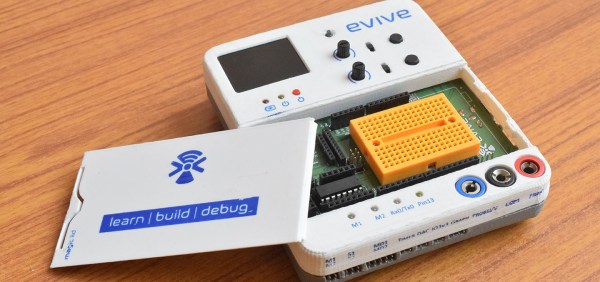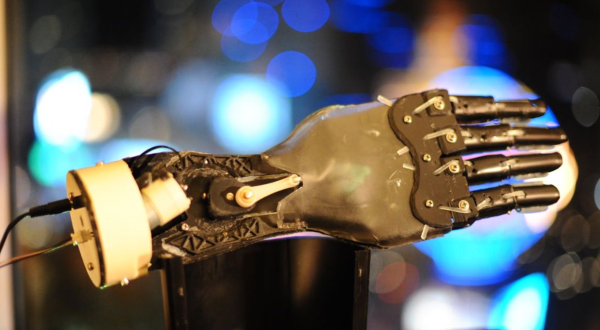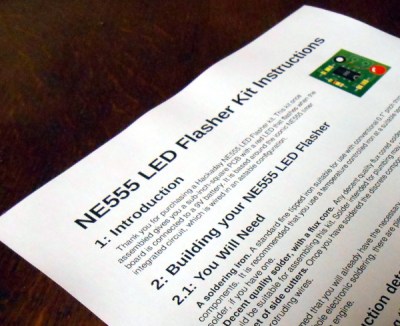The Maker movement is a wildly popular thing, even if we can’t define what it is. The push towards STEM education is absolutely, without a doubt, completely unlike a generation of brogrammers getting a CS degree because of the money. This means there’s a market for kits to get kids interested in electronics, and there are certainly a lot of options. Most of these ‘electronic learning platforms’ don’t actually look that good, and the pedagogical usefulness is very questionable. Evive is not one of these toolkits. It looks good, and might be actually useful.
The heart of the Evive is basically an Arduino Mega, with the handy dandy Arduino shield compatibility that comes with that. Not all of the Mega pins are available for plugging in Dupont cables, though – a lot of the logic is taken up by breakouts, displays, buttons, and analog inputs. There’s a 1.8″ TFT display in the Evive, an SD card socket, connectors for an XBee, Bluetooth, or WiFi module, motor drivers, a fast DAC, analog inputs, and a plethora of buttons, knobs, and switches. All of this is packed into a compact and seemingly sturdy plastic case, making the Evive a little more durable than a breadboard and pile of jumper wires.
You can check out a remarkably well produced video for the Evive below.
Continue reading “Hackaday Prize Entry: A Good Electronics Learning Toolkit”





















